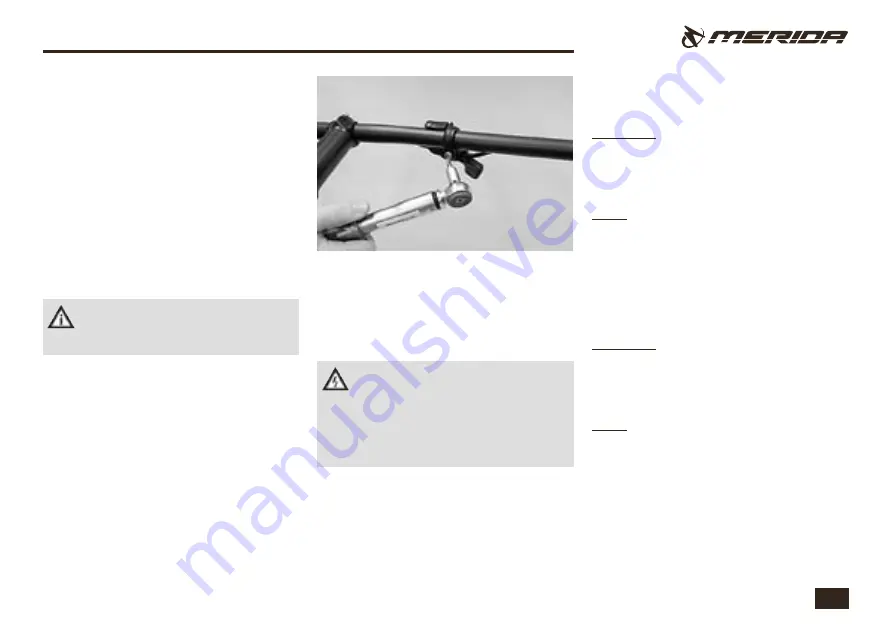
7. Check shift/brake levers for burrs and
sharp edges in the clamping areas. Remo-
ve the clamping bands completely from the
road handlebar levers before sliding them
onto the handlebar.
To prevent scratches in the carbon, never
make rotational movements when fitting
the levers.
Once the clamping bands are positioned
accurately on the handlebar, mount the
levers and tighten the clamps.
Make sure to also read the instruc-
tions of the shift/brake lever manu-
facturer before the mounting.
8. Bring the levers into their final position
and tighten the clamps to the lower limit
of the recommended torque setting. If the
levers are still not tight enough, increase
the torque. Never exceed the recommen-
ded maximum torque of the component
manufacturer.
With regard to the necessary torques, see
chapter 29.
“Recommended torques for
bolted connections”
. If the torques for two
components to be combined differ, make it a
rule to tighten them to the lower torque.
Never exceed the maximum torque
settings that are recommended by
the stem, handlebar or fork manufacturers.
Retighten all bolts after the first 100 - 300
km with the prescribed torque and then
again every 2,000 km.
Technical data
Mountain bike
Handlebar:
Clamping area (sleeve):
Standard: 25.4 mm
Oversized: 31.8 mm
Stem:
Handlebar clamping area:
Standard: 25.4 mm
Oversized: 31.8 mm
Fork steerer tube clamping area:
28.58 ± 0.05 mm (1 1/8“)
Road bike
Handlebar:
Handlebar clamping area:
Standard: 26 mm
Oversized: 31.8 mm
Stem:
Handlebar clamping area:
Standard: 26.0 mm
Oversized: 31.8 mm
Fork steerer tube clamping area:
28.58 ± 0.05 mm (1 1/8“)
8. Carbon handlebars and stems



























